- Home
- Register Here
- Products
- Download Center
- Collaborative Learning
- Biology Activities
- Music Activities
- Chemistry Activities
- Geography Activities
- History Activities
- Ancient & Modern Olympics
- Ancient Greek and Modern Education
- Antisemitism and Anne Frank
- Arachne
- Aztec Tributes Game
- Catch the Plague
- Egypt Quiz
- Greek Farming
- Greek Gods Identity Parade
- Henry VIII's Six Wives
- Medieval Snakes and Ladders
- Perseus and the Gorgon
- Slave Rebellions
- Technology and the Wilsons
- Tudor Entertainments
- Underlying Causes of First World War
- Victorian Working Life
- WW2 Air Raids
- Literacy Activities
- Buri and the Marrow
- Classic Tales
- Collection
- Complex Sentences
- Compound Nouns
- Consonant Clusters
- Don’t Cry Sly Fox
- Double or Single Consonants
- Feelings Synonyms
- Frequent Words
- Giant Turnip Rhyming Words
- Greek Word Detective
- Haiku
- Holes - Louis Sachar
- Improving Adjectives
- It could have happened, but in fact it didn't
- Macbeth - Close Look at Act One
- Macbeth - Macbeth's Feelings
- Macbeth - Two Minute Autobiography
- Macbeth Connect Four
- Not Again Red Riding Hood (Lotto Game)
- Not Again Red Riding Hood (Track Game)
- Oliver Twist
- Plural Monsters Machine and "One or More than One" Spelling Game
- Prefix Connect Four
- Prefix Pairs
- Punctuation Game
- Silent Letters
- Simile Bingo
- Sufficient Suffixes
- Suffix Trees
- The Elves and the Shoemaker
- The Giant Turnip (Bingo Game)
- Too Many Apostrophes
- Vowels (Connect Four)
- Maths Activities
- 12 and 24 Hour Clock
- Adding Two Digit Numbers
- Battle for Angle Forest
- Bigger or Smaller than Half
- Book Mystery
- Buy a Bear
- Change
- Decimal Street
- Doubling Cards
- Football Scores
- Four In a Row
- Fraction Frolics
- How Much How Many
- Maths Vocabulary
- Measuring
- More or Less (10-100)
- More than, Less than
- Number Balance
- Number Bonds
- Perfect Paint Palette
- Probability
- Regular Polygons
- Shape Monsters
- Transformations
- PSHE Activites
- Physics Activities
- Download Activities
- Interactive Demo
- Videos & Instructions
Collaborative Learning : Maths Activities
| Title | Image |
|---|---|
More than, Less thanDescription: This game has been designed to encourage the rapid recall of addition and subtraction in units of 2, 5 and 10 in numbers up to 100, as well as encouraging the language development for “more than” and “less than”. For example 10 more than 10 is 20. Learning Outcomes: Pupils will be able to express which numbers are more than or less than a given number. They will also increase their mental math skills. |
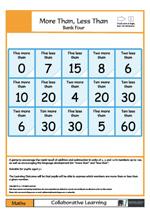 |
Buy a BearDescription: With this game we are giving young children the experience of shopping (parts of the bear) and exchanging money into equivalent amounts. We are also introducing children to the concept of ‘exact amount’. Learning Outcomes: Children will be able to make up amounts of 5 in different ways. They will know what the ‘exact amount’ for an item is. They will also have worked collaboratively with their partner |
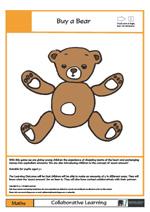 |
12 and 24 Hour ClockDescription: This game helps pupils to practise conversion of 12 to 24 hour clock times and vice versa. It also encourages the language of agreement/disagreement and of justification. There are a variety of ways of ‘telling’ the time. Learning Outcomes: Children will be able to make up amounts of 5 in different ways. They will know what the ‘exact amount’ for an item is. They will also have worked collaboratively with their partner. |
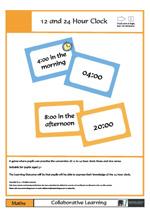 |
Adding Two Digit NumbersDescription: A fun activity for pupils to practise adding two digit numbers from the combined score of two dice, without using a calculator. This activity also encourages collaboration in the recording of the results. To vary the activity it can be played speaking the numbers in different languages or using different number systems. |
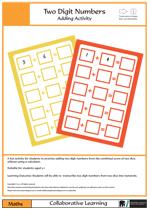 |
Decimal StreetDescription: This activity has been devised to help pupils with the understanding of fractions and decimals written in different ways. You can adapt the cards to make it easier or more difficult depending on your pupils’ ability. You could also record the numbers in different languages for those whose second language is English. Learning Outcomes: Pupils will be able to express their knowledge of decimal places. |
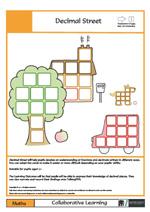 |
Four in a RowDescription: Four in a Row is a fun way for pupils to practise their mental arithmetic either by adding or subtracting numbers while playing Connect Four. To vary the activity it can be played speaking the numbers in different languages or using different number systems. Learning Outcomes: Pupils will be able to add and subtract simple numbers in their head without use of calculators. |
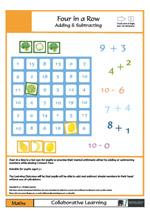 |
MeasuringDescription: Looking at the historical context of the way things used to be measured gives us an understanding of some of the language still used today. We want pupils to imagine that they lived hundreds of years ago and that they need to do some measuring. We have left some squares blank for pupils to put in other ways of measuring. Learning Outcomes: Pupils will have gained an understanding of the different ways in which things can be measured. |
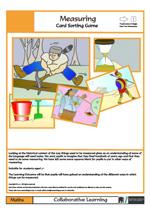 |
Book MysteryDescription: This game was developed to give students a richer level of vocabulary, in a fun way. It introduces some well known similes, and having seen how a simile is constructed students can then be encouraged to develop their own. If you make any interesting changes please send them to the address below so that we can expand our library of resources. Learning Outcomes: Students will have developed an understanding of how similes work and will be able to make up some of their own. |
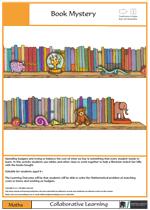 |
How Much How ManyDescription: The aims of this activity are to encourage pupils to know wether they should use ‘how much?’ or ‘how many?’ when describing a quantity. They will also use the language of justification to describe their reasoning. Learning Outcomes: Pupils will have developed the mathematical vocabulary relating to describing a quantity. They will also have practised their reasoning skills. |
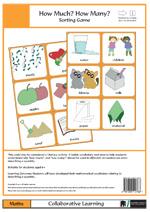 |
Number BondsDescription: Students can practise the number bonds for 10 and 20, while playing a game. They will roll a dice and progress along a board by working out the difference between 10 or 20 and the number rolled. This activity encourages quick mental arithmetic. Learning Outcomes: Students will have increased their ability to add numbers together quickly through recognising the number bonds for 10 and 20. |
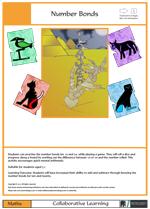 |
Football ScoresDescription: Students have the challenge of sorting out two sets of information to get the right football results. The only way that they can do this is by exchanging information individually or in pairs. The activity encourages collaboration as well as mathematical logic. Learning Outcomes: Students will be able to work collaboratively and apply their mathematical skills to solve a problem. |
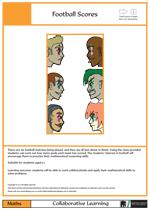 |
Fraction FrolicsDescription: Fractions can be quite daunting for some students, so this game has been devised to help them recognise the value of fractions both in words and numbers. We have related the activity to food and cooking, so students will also be inventing some original fun dishes. Learning Outcomes: Students will be able to work out whether a fraction is more or less than a quarter, a half or a whole number. |
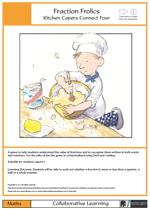 |
Maths VocabularyDescription: It is important to develop students’ learning and understanding of mathematical vocabulary and reinforce that learning. In this activity students will identify maths words by matching them to other words with the same meaning. Learning Outcomes: Pupils will be able to recognise a variety of maths words and have an increased understanding of their meaning. |
 |
ChangeDescription: This game will help students to remember the appearance and values of different coins. Students must carry out simple additions in order to work out which collections of coins they would need to buy a priced item. Learning Outcomes: Pupils will be able to recognise a variety of maths words and have an increased understanding of their meaning. |
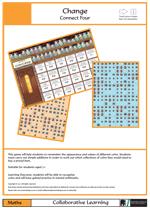 |
TransformationsDescription: This activity gives students an opportunity to practise their mathematical vocabulary. In an enjoyable context, students are asked to draw and describe a series of geometric shapes to their partners, who then have to transform the descriptions into visual representations. Learning Outcomes: Students will be able to describe various geometric shapes. They will also have used creativity and practised their general vocabulary / communicative skills. |
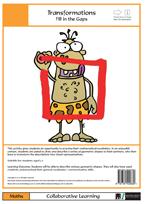 |
Shape MonstersDescription: The ability to identify and label shapes is fundamental in mathematics, and useful in many other subject areas. In this activity students can practise labelling and identifying various geometric shapes. Learning Outcomes: Students will be able to name and identify different geometric shapes. |
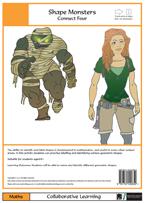 |
Bigger or Smaller than HalfDescription: Fractions can be quite daunting for some students, so this game has been devised to help them recognise the value of fractions in a fun way and to have a better understanding of how fractions represent a part of a whole. Learning Outcomes: Students will be able to work out whether a fraction is more or less than a half. |
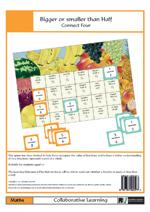 |
Doubling CardsDescription: Doubling Cards is a fun way for pupils to practise their mental arithmetic, either by doubling or halving numbers. Learning Outcomes: Pupils will be able to mentally double and halves simple numbers without use of calculators. |
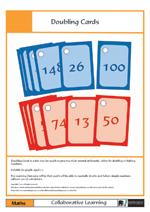 |
Number BalanceDescription: Balancing the weights of various monsters to win battles is a fun way for students to practise making up equal amounts. If a werewolf weighs 18 kilos how many other monsters are needed to make up that weight? Learning Outcomes: Pupils will have practised their mental arithmetic and will be able to compare and balance numbers / weights.
|
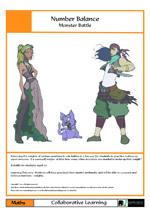 |
Battle for Angle ForestDescription: Estimating and comparing are two important components of maths and in this activity the pupils look at the angle presented and decide if they are more or less than the angles on the Game Board. At the same time, they can also play collaboratively building up the story of Angle Forest to see if they can save it from destruction. Learning Outcomes: Pupils will know if the angle they see are more or less than obtuse,acute, reflex, right angles or straight line angles. |
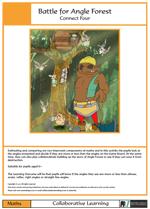 |
Perfect Paint PaletteDescription: Mixing paint to get the right colours in the right quantity is a fun way for pupils to practise ratio. We have used the styles of various famous artists as well as giving pupils the opportunity to mix the paint for their own masterpiece. A great combination of Maths and Art. Learning Outcomes: Pupils will be able to work out the ratio of colours that are needed to make a specific colour. |
 |
Regular PolygonsDescription: Pupils learn the characteristics of regular polygons while they are studying geometry. In this game they can practise matching the shapes and their angles to the descriptions on the Game Board while playing Connect Four. Learning Outcomes: Pupils will be able to recall the characteristics of regular polygons. |
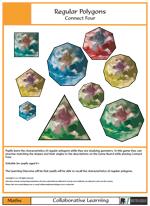 |
ProbabilityDescription: In daily life we are always working out the probability of certain events happening or not. Playing probability connect four will give pupils practise as calculating their chances of picking different coloured cards from different combinations. Learning Outcomes: Pupils will have practised working out the probability and chance of picking specific cards out of ten. |
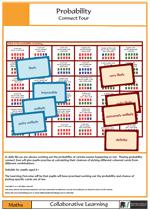 |
More or Less (10-100)Description: Pupils need practice learning the value of numbers up to 100 and in this activity they have the fun of playing connect four while remembering if a number is more or less than another. Playing will also help develop the pupils vocabulary and their ability to work collaboratively. Learning Outcomes: Pupils will be able to identify a number is more or less than another number as well as improve their vocabulary. |
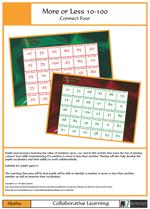 |

